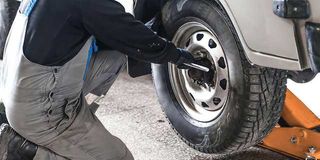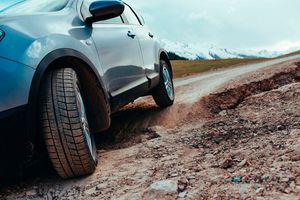
Man changes wheel of car in car service. Professional auto mechanic in overalls removes wheel from a truck in a garage.
Car tyres are offered in different widths ranging from “fat tackies” to “pizza cutters”. Wider tyres are conspicuously the predominant choice for style. Are there any other advantages of wide tyres? What should one look for when choosing tyres?
The technicalities of different tyres are much more complicated than you might think. Width is just one aspect. Others include diameters, tyre-wall height profiles, ply ratings and flexion, tread patterns, air pressures, and casing construction materials.
The performance of any tyre is affected by them all, with both one-by-one and interlinked effects and consequences.
Then there is the vehicle they are on, the roads they mostly use, the loads they carry and the ambient speeds they are subjected to. There are also implications for performance, durability and cost. The whole recipe for choice can be bewildering.
And in any of those permutations, the tyre is part of your suspension cushion and it enables you to turn, brake and accelerate. So the first and abiding answer is “You can’t have it all.” Anything that improves one aspect will compromise something else.
To keep things simpler and hopefully clearer, let’s summarise the quest as comparative “grip” and “comfort”. And with all the foregoing aspects in mind, focus on the particular attributes of “fat” and “skinny” tyres (assuming all other factors are equal…which they rarely are).
Amid all the pros and cons, a primary consequence of fatter tyres is that they are markedly more competent in soft sand because they are more tolerant of low pressures and are likely to “float” on the top instead of digging in.
Skinny tyres are usually better in slippery mud because they do dig in more and find grippier substrates (instead of sliding or spinning on the surface) and give more grip to keep you moving forwards and more sideways grip for steering control.
Fatter tyres are intrinsically “bigger”, so there is more air cushion (better heat dissipation), but they are heavier (performance downside) and more expensive.
Skinny tyres are lighter and cheaper, with advantages to performance and fuel consumption but have more sidewall flexion (more comfort at normal pressure but less tolerance of lower pressures).
Perhaps surprisingly, at normal pressures on smooth tarmac, both have almost identical footprints, which are circular at normal pressures so have similar wear life.
Weigh the pros and cons and decide which is better for your vehicle and usage patterns.










